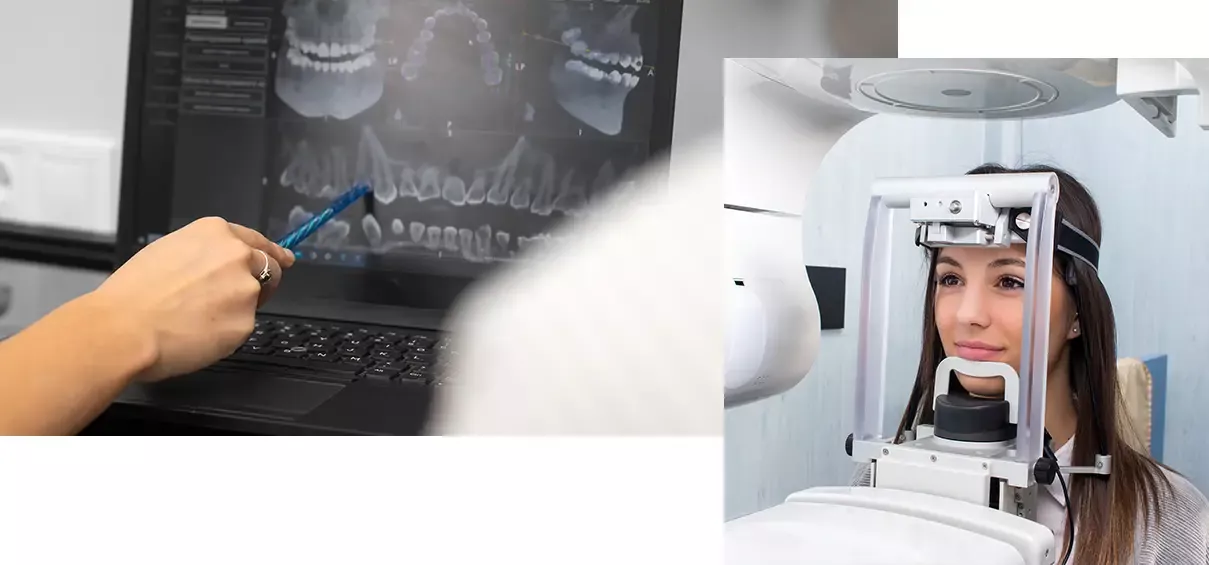Endodontic Diagnostics
Endodontic diagnostics is a rigorous testing process that helps our doctors make a clear, accurate diagnosis so that appropriate treatment can be recommended. Thorough diagnostics help our dentists assess the health of the dental pulp (the innermost part of the tooth) and determine if it has been damaged, infected, or inflamed. The goal is to decide whether or not a root canal is necessary to preserve the tooth.

Steps involved in a complete diagnosis
Patient history and symptoms review
Your doctor will begin by asking about your dental and medical history, particularly focusing on symptoms such as pain, swelling, sensitivity to temperature, or difficulty biting or chewing. The nature of the pain (sharp, dull, spontaneous, continuous) and its duration are important clues.
Visual examination
Your dentist will visually inspect the affected tooth and surrounding tissues for signs of infection, such as swelling, redness, and decay. Assessment of tooth structure for cracks, fractures, or discolouration may also be part of this step.
Palpation and percussion tests
Your dentist will gently press the gums around the tooth to check for tenderness or swelling. Percussion (tapping) is done on the tooth to determine whether it is sensitive to touch or pressure, which may indicate inflammation of the tissues.
Thermal sensitivity tests
Cold or heat tests are used to evaluate the response of the pulp to temperature changes. A healthy pulp should react to cold stimulus and then quickly return to normal. An exaggerated or prolonged reaction may indicate pulp that needs to be removed.
Electric pulp testing (EPT)
The involves placing a small electrical stimulus on the tooth to determine whether the nerve inside the pulp is alive or non-responsive. A tooth that does not respond to this test may have a non-vital pulp, which could require endodontic treatment.
Digital X-rays
X-rays help give your dentist a complete view of the structure of the tooth, root, and surrounding bone. They are looking for signs of infection at the root tip, deep cavities, or any fractures that could affect the pulp. In more complex cases, we may also use Cone-beam computed tomography (CBCT) for a 3D view.
Periodontal examination
The health of the gums and the surrounding bone structure is checked to rule out periodontal issues that might mimic endodontic symptoms. Probing depths around the tooth can help identify periodontal disease or cracks extending into the roots.
Bite test
Your dentist may ask you to bite down on a soft object (like a cotton roll) to identify a cracked tooth or sensitivity when chewing.
Transillumination
This is a test that involves shining a bright light through the tooth to detect fractures or cracks that may not be visible during a standard visual exam.
Diagnosis and treatment planning
Based on the collected information, your dentist can diagnose the condition of the tooth. If endodontic treatment is necessary, the next steps will involve planning a root canal procedure or other interventions to save your tooth.